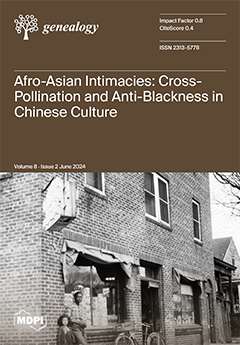The movement from regular lexicon to onomasticon, especially anthroponomasticon, is often mediated by cultural principles which may determine which concepts could normally be selected for the formation of personal names. Restrictive traditions have guiding principles making some concepts acceptable or not, and some
[...] Read more.
The movement from regular lexicon to onomasticon, especially anthroponomasticon, is often mediated by cultural principles which may determine which concepts could normally be selected for the formation of personal names. Restrictive traditions have guiding principles making some concepts acceptable or not, and some names
central or
peripheral. In this paper, I discuss the principle of
commemorability as gatekeeping the selection of concepts for the formation of personal names in Akan; and, having established the restrictiveness of the Akan anthroponomastic system, I identify the two considerations of
honourability and
preservability as making up the commemorability principle. The study is inductive, establishing the theory that explains the principles for the selection of appropriate concepts for the construction of personal names, and it relies on ethnographic resources including observation, interviews, and focus group discussions supported by name content analysis to generate the theory. The paper establishes that
commemorability is founded on a general philosophy that upholds
the societal,
effort and perseverance, and
social cognitive value in the selection of concepts for constructing personal names. Guided by these considerations, concepts are placed within a value ranking system to determine their ‘commemorability’, with items that rank as ‘honourable’ normally selected and processed as personal names. In the construction itself, there is a preference for the cognitive over the physical and the general beyond the specific, and there is an overriding preference for the use of general commemorability concepts which represent
excellence,
prominence,
fullness,
abundance,
inexhaustibility,
strength,
endurance, and
resilience, among others, which are used both as base-concepts for family names or as ‘amplifier’ concepts in the construction of extension names.
Full article





